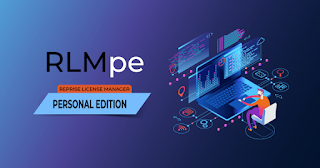Understanding Electronic Software Licensing
In
software licensing mechanization, there are commonly two stages: the
computerization of the business forms for the product maker, and the automation
of the end client procedures of enactment and arrangement.
Mechanizing the
Software License Delivery Process
How
we get from accepting the request to conveying the product and access to
licenses to the end client are the thing that the vast majority consider as the
total license conveyance process. As a piece of this stage, the client normally
gets a download connection to the product and the entrance codes required for
initiation.
This the stage alone is adequate for income acknowledgment, guaranteeing that your end the client has gotten all that is required to furnish them with access to the
gained item or administration.
Automating enactment and license sending
This
stage in the Electronic software licensing procedure takes a normal license mechanization experience from
great to incredible. What occurs after the product is introduced, when the client begins to utilize it, impacts their general understanding, and most
organizations have not actualized the automation of these means. Perhaps this has
transpired previously.
Reprise
Software Inc. licenses your association to realize that you are utilizing
bought software inside as far as possible set by your ISV. What's more, RLM
gathers use data (at your choice) for later announcing and investigation. At
the point when one of your ISVs conveys software to you that joins RLM,
notwithstanding the ordinary application documents, you will get some extra RLM
segments:
- The RLM (nonexclusive)
license server gave by Reprise Software, called "RLM" on UNIX
frameworks, or "RLM.exe" on Windows. This is the equivalent for each
ISV who utilizes RLM.
- The RLM utilities gave
by Reprise Software. This is the equivalent of each ISV that utilizes RLM.
- A custom license server worked from segments from Reprise Software by your ISV. This server will have an alternate name for each ISV.
- A license document to
portray your privileges to the item. This license document is one of a kind to
your site.
- Notwithstanding these
parts which your ISV supplies, you can make an ISV alternatives document to
control different parts of the activity of each ISVs item. This choice record is
portrayed later in this manual. Likewise, an RLM alternative record licenses
you to limit access to different organization orders.
Most license supervisors give APIs calls to control a considerable lot of the parts of licensing conduct, just as choices inside the license servers to control licensing conduct. The plan reasoning of RLM is to save the effortlessness of the framework for both ISVs and License Administrators by maintaining a strategic distance from every pointless alternative in the customer library and the license servers and moving every one of these choices to the license the document, where they are noticeable and justifiable by everybody.




Comments
Post a Comment